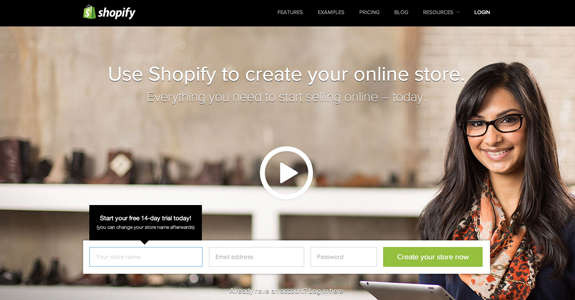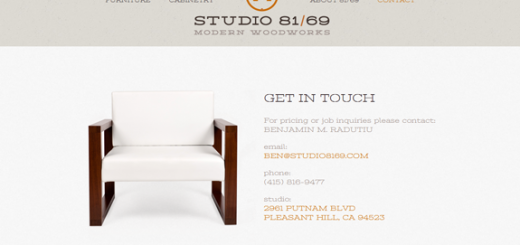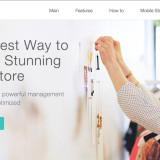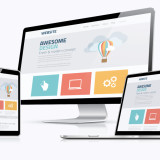Four Pillars of a Trust-Inspiring Website Design
Whether you are sharing information, selling products or trying to impress potential employers with a portfolio website, trust plays a major role. The Internet has kicked gullibility out of people. People take all things on the Internet with a pinch of salt. Proving trust on the Internet is not an easy task, but it can be done. Most users automatically judge a website on the basis of multiple factors – the efficiency of the website, the way the website looks, how secure it feels, etc.
As a designer, you need to place different trust elements in different parts of the website to ensure that the visitors trust the website at the very first glance. There are several businesses and organizations that have an online-only presence. They do not have a brick-and-mortar presence that they can use to build trust among the online community. According to the findings of a project by Standford, almost one of two people said that they design elements like layouts, font size, color schemes and typography affected how they felt about a particular website.
By designing a website well, you can inspire trust among the users, while a sloppy design can turn off the visors. Let’s take a look at the four pillars of a trust-inspiring design.
# First Pillar: Professional Design Plus the Human Element

Getting the design right is of paramount importance. Your layout needs to be clean, the navigation has to be intuitive, the fonts need to be regular – on the whole, the design should look smooth and polished, and it should function perfectly. When encountered with an unattractive website, broken links, or buggy websites, most visitors quickly lose trust and leave. Your website must look good; preferably, better than that of your competitors. In addition, you also need a strong copy that can inform and impress users.
But a professional web design is not enough – you need a human element that the visitors can relate to. If you want the visitors to engage with your brand, let there be at least a few personal elements on the page. The simplest trick in the book is placing the picture of a smiling man or woman with headphones and speaker on the page. A photograph of half a dozen people in suits standing purposefully is another. When using this method, make sure that the images are original, powerful and high-definition.
But you could also achieve similar results by placing the tweets from the owner or the site or the employees in a side bar. An about page with pictures and designation of employees can help, while a testimonial section can also make people relate with the website and trust you more.
# Second Pillar: Emphasize Security, Offer Guarantees

Security is an important factor for any website that handles customers’ data, and for ecommerce or banking websites, it is the central factor that can make or break the trust of the users. When customers are shopping on a website, or when they are performing any action that requires them to reveal any personal information, the tendency is to hit back button if they feel the slightest suspicion about the website. So, not only does your website have strong security, it also has took appear secure.
You need something that would make the users feel secure at every stage of the transaction. One of the simplest ways of increasing your visitor’s perception of security is highlighting and increasing the prominence of SSL, VeriSign and other security certificates. If you are designing an ecommerce website, providing separate guarantee or warranty for products and displaying it prominently can also help convert visitors by increasing trustworthiness of individual items on the store.
# Third Pillar: Use Social Media to Boost Trust

Most well-tended websites today have social media accounts. If the users can see that you have been on Facebook, responding to queries from customers and interacting with a hundreds of people on a regular basis, it becomes easier for him to feel that your website is a safe place. If you have thousands of tweets and you regularly converse with your customers, employees and others through the account, it becomes easier for users to trust you.
But it can be a double-edged sword: if people are saying good things about you on the social media sites, you can easily build trust. However, if your website is being bad-mouthed by people, social media will warn potential visitors and turn them against your website. So, use this weapon with care.
# Fourth Pillar: Sticking to Standards
There is a place for showing off your design skills, and then there is a place where it is best to stick to conventions. There are certain things that every website does; for instance, hover your mouse over the menu and it will drop down. This is the way most websites function. While a creative navigation scheme that makes the user solve puzzles to reach the page she wants may seem like an innovative idea, it will befuddle the visitors and turn them off (in most cases).
By sticking to standard web design conventions, you ensure that the users do not feel lost. This doesn’t automatically promote trust, but it surely helps prevent the erosion of trust.
Conclusion
In conclusion, remember that it is best to stick to standards, give social proof to visitors, to highlight security and to design a professional, but human, website. This is just the start, though. While the design will inspire trust, only good services from the company will actually make the customers trust the website. But a good design helps win half the battle.
Related Resources:








